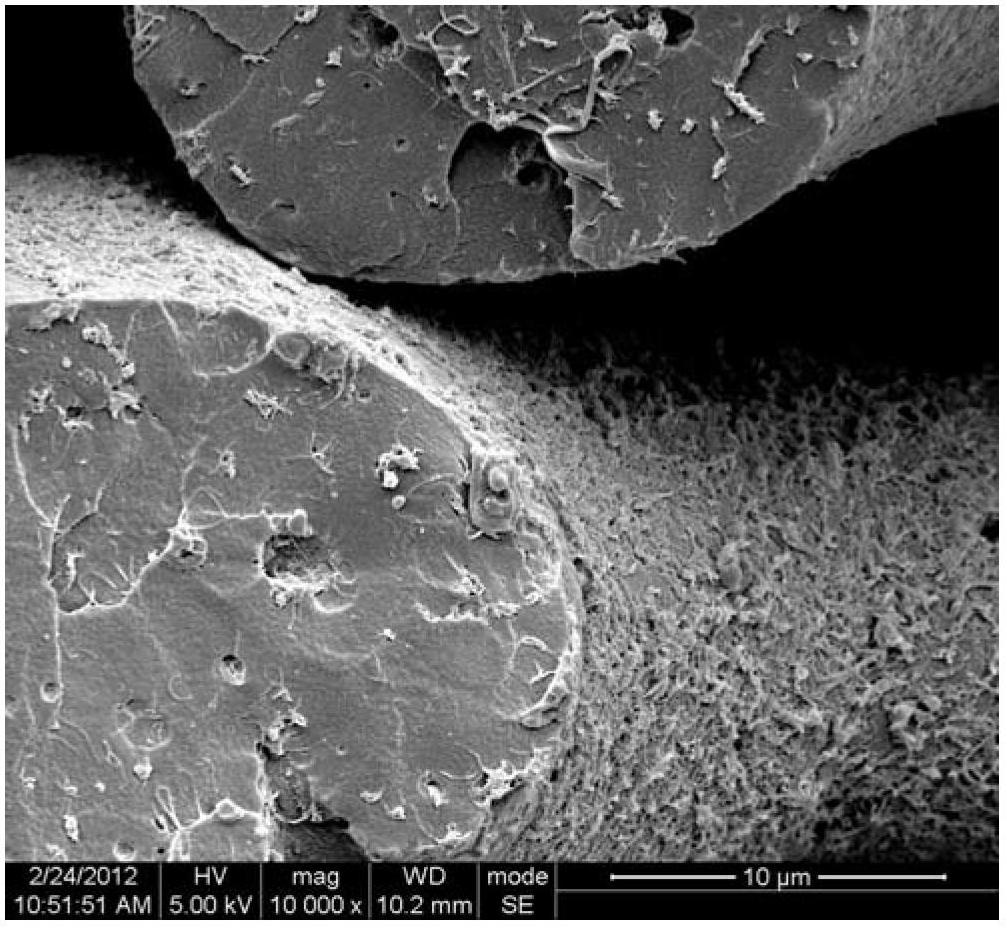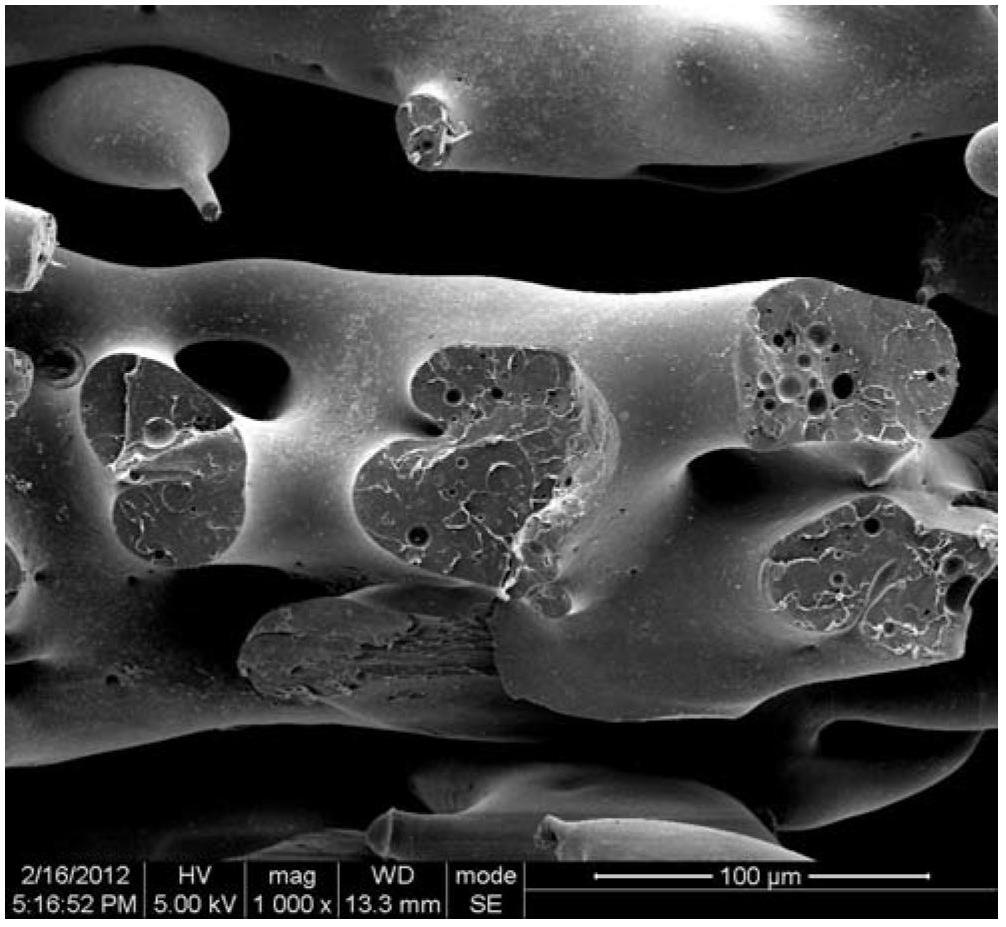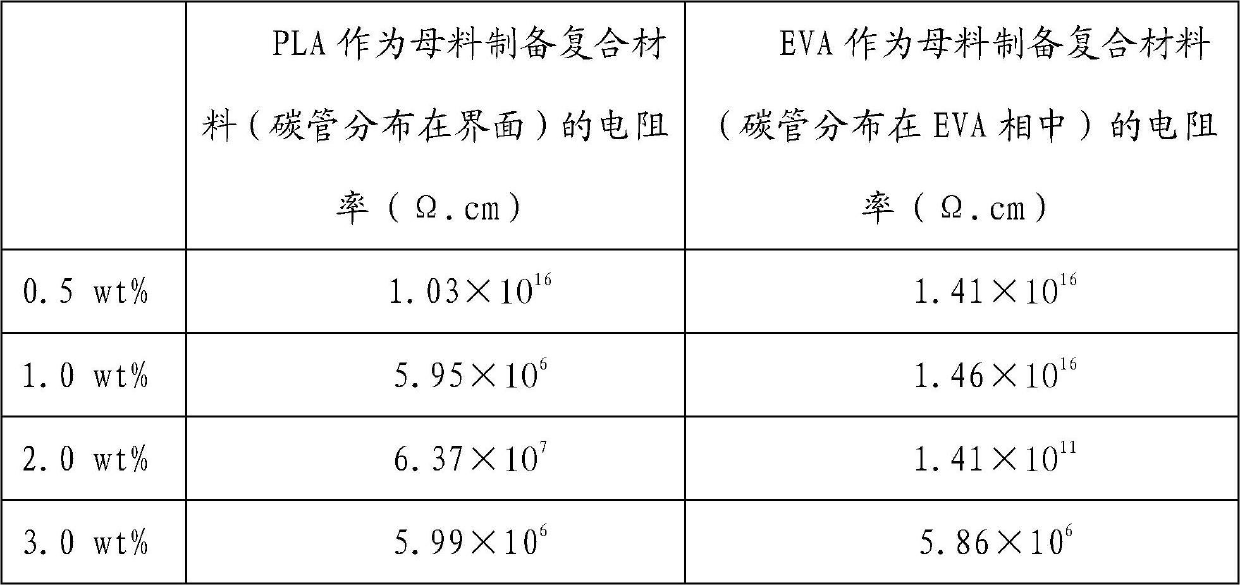Method for preparing polymer-based conducting composite material by melt blending
A conductive composite material, melt blending technology, applied in the direction of conductive materials dispersed in non-conductive inorganic materials, etc., can solve the problems of application limitations, blend shape affecting processing performance, melt strength change, etc. Low permeation value, good electrical conductivity and high utilization rate
- Summary
- Abstract
- Description
- Claims
- Application Information
AI Technical Summary
Problems solved by technology
Method used
Image
Examples
Embodiment 1
[0025] A method for preparing a polymer-based conductive composite material by melt blending, the steps of which are:
[0026] 1) Selection of raw materials: select multi-walled carbon nanotubes with an average diameter of 100nm and an average length of 10 μm as conductive fillers, and then select viscosity=7.9×10 3 Polylactic acid (PLA) of Pa·S is used as polymer one, and the viscosity η=5.2×10 1 Pa·S ethylene-vinyl acetate copolymer (EVA) as polymer di(η 聚合 物一 / η 聚合物二 >100); polylactic acid and ethylene-vinyl acetate copolymer are chemically incompatible polymers.
[0027] 2) Calcining the conductive filler carbon nanotubes, the parameters of the calcination are: the time is 1 h, and the temperature is 1000°C.
[0028] 3) Melt blending: Melt blend the calcined conductive filler with polymer one first, the melting temperature of polymer one (polylactic acid) is 140-160°C, the blending conditions are: the blending temperature is 190°C, and the blending temperature is 190°C...
Embodiment 2
[0037] 1) Selection of raw materials: choose graphite with an average diameter of 500nm and an average length of 3 μm as a conductive filler, and choose a viscosity η=7.9×10 3 Polylactic acid (PLA) of Pa·S is used as polymer one, and the viscosity η=5.2×10 1 Pa·S ethylene-vinyl acetate copolymer (EVA) as polymer di(η 聚合物一 / η 聚合物二 >100); chemical properties of polylactic acid and ethylene-vinyl acetate copolymer are incompatible.
[0038] 2) Calcining the conductive filler graphite; the parameters of the calcination are: the time is 3 hours, and the temperature is 600°C.
[0039] 3) Melt blending: Melt blend the calcined conductive filler with polymer one first, the melting temperature of polymer one (polylactic acid) is 140-160°C, the blending conditions are: temperature 190°C, time 5min , the mass ratio of conductive filler to polymer 1 is 1:100. The masterbatch is obtained after cooling and solidifying at the conductive temperature.
[0040] Then the masterbatch is melt...
Embodiment 3
[0042] 1) Selection of raw materials: Single-walled carbon nanotubes with an average diameter of 200 nm and an average length of 20 μm are selected as conductive fillers. Select ethylene-vinyl acetate copolymer with low affinity with conductive filler as polymer 1, and polylactic acid with high affinity with conductive filler as polymer 2. Theoretical wetting coefficient of the blend system composed of these three materials ω a =3.52>1, where γ represents the interfacial tension between the two phases; and the selected polymer one and polymer two are chemically incompatible polymers.
[0043] 2) Calcining the conductive filler carbon nanotubes; the parameters of the calcination are: the time is 6 hours, and the temperature is 1000°C.
[0044] 3) Melt blending: Melt blend the calcined conductive filler with polymer one first. The melting temperature of polymer one (ethylene-vinyl acetate copolymer) is 70-90°C. The blending conditions are: the temperature is 120 °C, the time...
PUM
| Property | Measurement | Unit |
|---|---|---|
| diameter | aaaaa | aaaaa |
| length | aaaaa | aaaaa |
| diameter | aaaaa | aaaaa |
Abstract
Description
Claims
Application Information
 Login to View More
Login to View More - R&D
- Intellectual Property
- Life Sciences
- Materials
- Tech Scout
- Unparalleled Data Quality
- Higher Quality Content
- 60% Fewer Hallucinations
Browse by: Latest US Patents, China's latest patents, Technical Efficacy Thesaurus, Application Domain, Technology Topic, Popular Technical Reports.
© 2025 PatSnap. All rights reserved.Legal|Privacy policy|Modern Slavery Act Transparency Statement|Sitemap|About US| Contact US: help@patsnap.com



